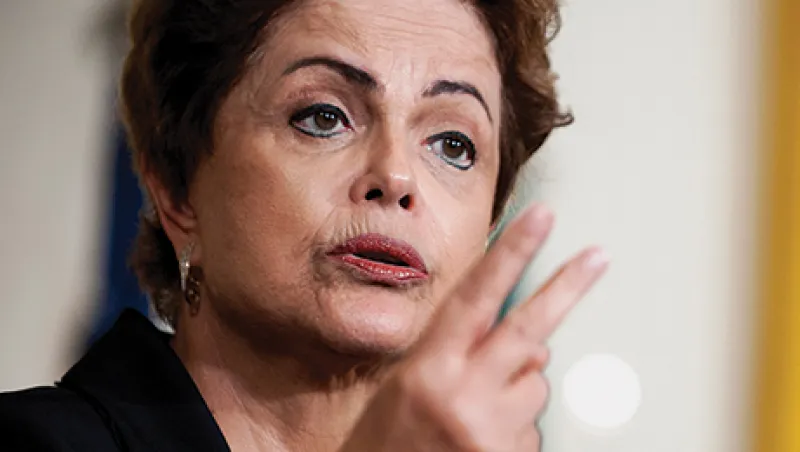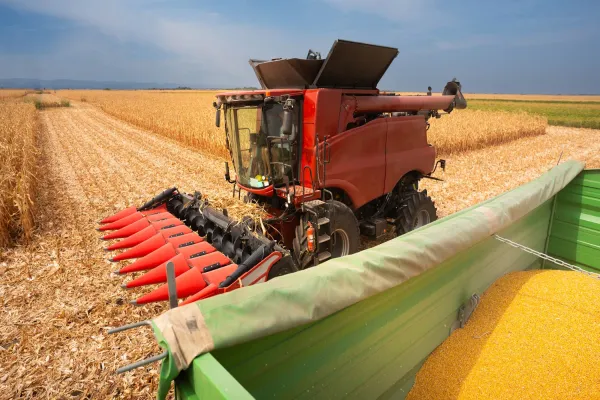Economists may not use the word “crisis” to describe Latin America’s plight, but falling commodity prices, political scandals and fears of shock waves from a U.S. interest rate hike have turned the region into one of the worst performers among the world’s emerging markets. “The region is kind of in the doghouse,” says Axel Christensen, BlackRock’s Santiago, Chile–based chief investment strategist for Latin America.
The International Monetary Fund, which will join the World Bank in holding its annual meetings in Lima in October, recently trimmed its 2015 growth forecast for Latin America and the Caribbean by 0.4 percentage point, to just 0.5 percent. That figure could well plummet to recession levels if commodity prices continue to shrink as a result of the oil and gas glut created by fracking in the U.S. and the continued economic slowdown in China, the biggest buyer of Latin commodities.
Brazil is already mired in recession and will see its economy contract by 1.5 percent this year, according to the IMF. Besides falling revenues from soybean and iron ore exports to China, the country is being dragged down by a multibillion-dollar graft scandal at state-controlled Petróleo Brasileiro. Prosecutors have indicted 117 business executives and politicians in the case, and speculation that indictments could reach as high as President Dilma Rousseff and her mentor and predecessor, Luiz Inácio Lula da Silva, have shaken Brazil’s political system. Standard & Poor’s lowered its sovereign rating on Brazil’s debt by one notch to BB+, below investment grade, saying political uncertainty stemming from the Petrobras scandal was undermining the government’s ability to tighten fiscal policy and would cause a rise in deficits and debt.
In Mexico scandals and lower energy prices have dimmed the reformist legacy of President Enrique Peña Nieto. The kidnapping and presumed murder of 43 university students in the state of Guerrero last year continues to haunt the government. Official incompetence in the war against narcotics gangs was laid bare in July, when drug kingpin Joaquín (el Chapo) Guzmán burrowed his way out of Mexico’s maximum security prison.
These incidents helped overshadow Peña Nieto’s historic opening of Mexico’s oil and gas to foreign investment this year. The markets did the rest. Amid continued low global oil prices, the government’s first auction under the new regime was a huge disappointment, with only two of 14 areas put up for tender attracting buyers.
Mexico, which has emerged as a global powerhouse in manufactured exports, at least benefits from its proximity to the U.S., which takes 80 percent of Mexican goods sold abroad. Most other Latin countries will have to look for other, longer-term sources of growth besides commodities.
Many Latin American central banks have tried to keep interest rates low to stimulate their slowing economies. “But after two years of expansionary policies, we don’t see a significant effect on growth,” says Alfredo Coutiño, director for Latin America at Moody’s Analytics. “We do see, however, a strong depreciation of currencies, which implies there is capital flight and the potential for higher inflation.” Pressure will only increase if the U.S. Federal Reserve Board begins raising interest rates this fall.
Economists say the decadelong boom that ended last year was exceptional and that Latin America should look elsewhere for development. “These countries have to embrace structural reforms that make their economies more competitive, more flexible, more efficient, while keeping an investment-friendly environment,” says Alberto Ramos, Goldman Sachs Group’s senior economist for Latin America.
That’s a difficult balancing act even for a stellar performer like Chile, the one country in the region that’s on the verge of attaining developed-nation status. President Michelle Bachelet unveiled a plan last year to provide free university education, in a bid to improve the capabilities, and earning power, of the country’s workers. She funded the program by raising corporate taxes, especially those on copper mines, the main source of export revenue. But that move depressed investment — a development that, along with falling copper prices, has caused an economic slowdown. The government, which began the year projecting growth of 3.6 percent, now predicts Chile’s economy will expand by just 2.5 percent in 2015.
See also “Peru Looks to Sustain Growth in Wake of Commodities Bust.”
Get more on emerging markets.






